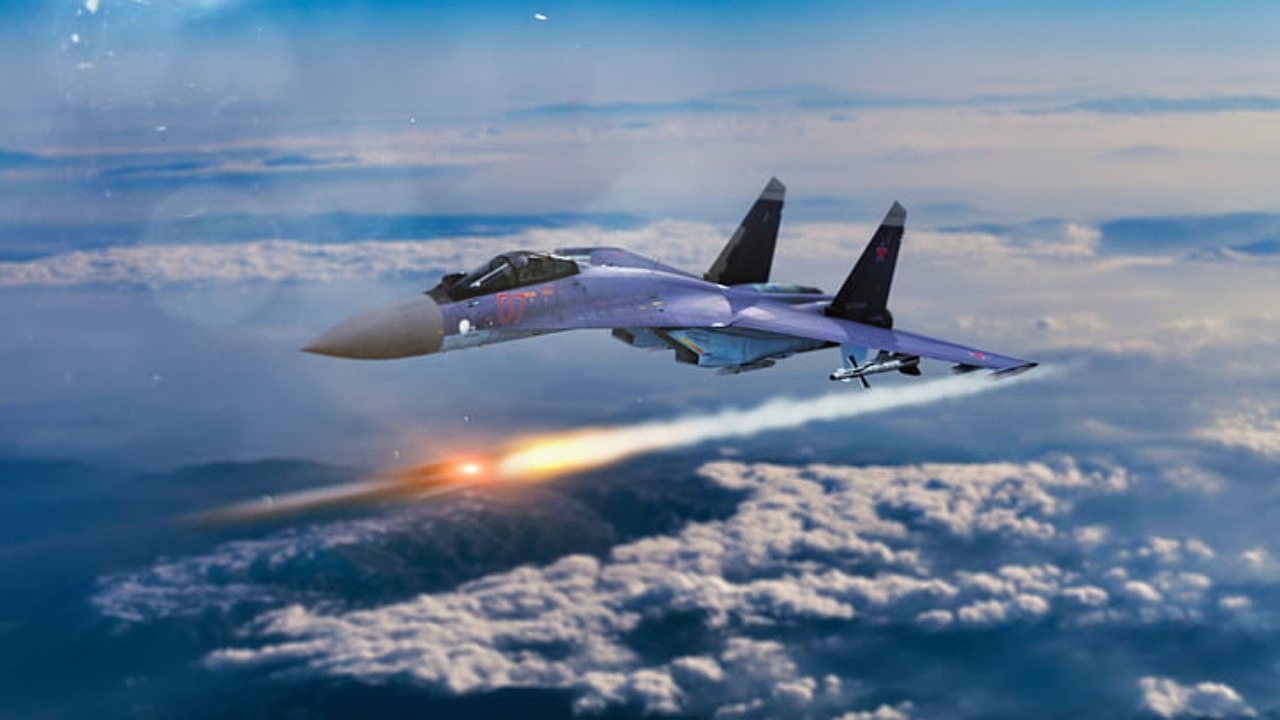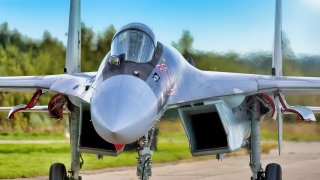Russia's Su-35 Flanker Fighter Nightmare Is Just Getting Started
The performance of Russia's Su-35 "Flanker" in the ongoing conflict in Ukraine has raised questions about the aircraft's effectiveness in modern warfare.
Summary: The performance of Russia's Su-35 "Flanker" in the ongoing conflict in Ukraine has raised questions about the aircraft's effectiveness in modern warfare.
-Originally intended as an advanced multirole fighter capable of achieving air superiority and conducting precision ground attacks, the Su-35 has encountered significant challenges in the Ukrainian airspace.
Russia's Su-35 Fighter Isn't What Many Thought
Russia’s illegal and ineffective invasion of Ukraine has drawn international condemnation and international scrutiny of Russia’s military abilities. Russia was supposed to make meaningful territorial gains, and Russia was supposed to secure the airspace above the conflict. As the conflict enters year three, neither outcome has happened.
Russia’s failure to secure the airspace above Ukraine surprised many observers while facilitating the current conditions of the conflict: an entrenched war of attrition, stagnant and hard-fought, in which both sides have suffered unsustainable losses to their troops and equipment. Russia, in particular, has suffered losses—losing an eyebrow-raising number of tanks, troops, and aircraft.
One of the aircraft that the Russians have had trouble keeping in the sky is the Su-35 “Flanker.”
Introducing the Su-35
Derived from the Su-27, the Su-35 is visually distinct from its predecessor thanks to the installation of canards, which are small lifting surfaces placed aft of the wings. The Su-35 was given canards, plus a reshaped wing leading-edge extension, to redirect airflow and solve the buffeting problem that the Su-27 suffered in high angles of attack (AOA).
The Su-35’s updated flight surfaces allow the Su-35 to endure as many as 10 gs. And, the improved flight surfaces, when paired with a fly-by-wire control system, have resulted in a jet that is notably more maneuverable than the preceding Su-27.
The Su-35 was also upgraded with a new weapons-control system, which includes a phase-arrayed radar with pulse-Doppler tracking, the N011 Bars. The new system allows the Su-35 to track targets below the horizon, allowing the jet to engage ground targets more easily.
The N011 represents a notable improvement over the N001 Myech radar that was installed on the Su-27; while the N001 could only track ten targets, and fire just two missiles at the targets simultaneously, the N011 can track fifteen targets, and fire six missiles simultaneously.
The Su-35 relies upon two Saturn AL-41F1S turbofan engines, each of which can produce 30,900 pounds of thrust with the afterburner engaged, allowing the Su-35 to reach an impressive top speed of Mach 2.25.
Trouble in Ukraine
Despite the improvements to the Su-35, the jet has struggled to stay airborne in the skies above Ukraine. Multiple Su-35s have been downed, including one off the coast of Sevastopol, Crimea last month.
“Footage online showed a jet on fire, spiraling into the sea and exploding,” The Guardian reported. “The Russian-installed governor of the illegally occupied region, Mikhail Razvoshayev, said on Thursday the pilot ejected and was picked up by rescuers but have no details as to the cause of the crash.”

The exact cause of the crash is not clear. One thing is clear, however: the lost Su-35 was hardly the first. Ukrainian forces shot down thirteen Russian aircraft last February, two of which were the Su-35. Forbes suggested that Russia had lost “six of their 120 Su-35s.”
“The Russian air force has lost 95 jets since February 2022,” Forbes reported. “That’s four per month. In [February 2024], however, the air force has written off warplanes at rate of 60 per month.” An unsustainable rate.
About the Author: Harrison Kass
Harrison Kass is a defense and national security writer with over 1,000 total pieces on issues involving global affairs. An attorney, pilot, guitarist, and minor pro hockey player, Harrison joined the US Air Force as a Pilot Trainee but was medically discharged. Harrison holds a BA from Lake Forest College, a JD from the University of Oregon, and an MA from New York University. Harrison listens to Dokken.
All images are from Shutterstock.


